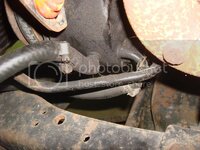denpo
Carburated Nihilist
I'm gathering all the missing part to complete my hydroboost setup and I'm planning to have two -6an bung weld in for the returns.
I then realized I have no idea what the housing is made of.
I suppose it's steel, but better safe than sorry, I'm asking.
I then realized I have no idea what the housing is made of.
I suppose it's steel, but better safe than sorry, I'm asking.


